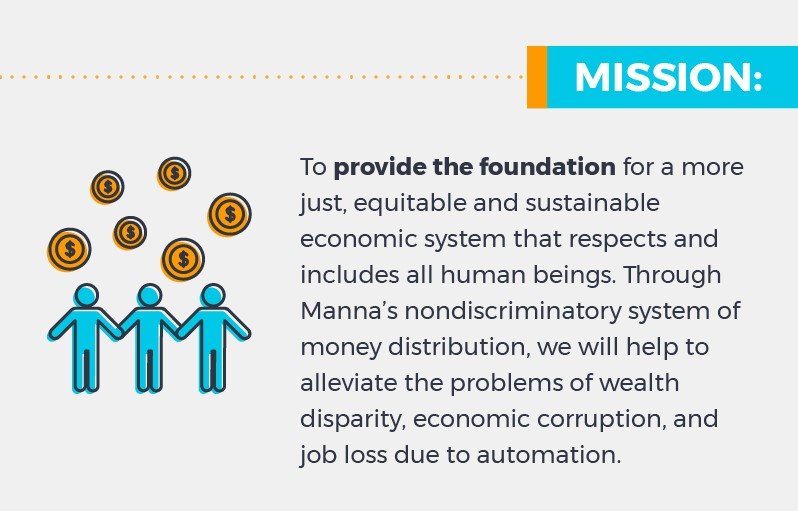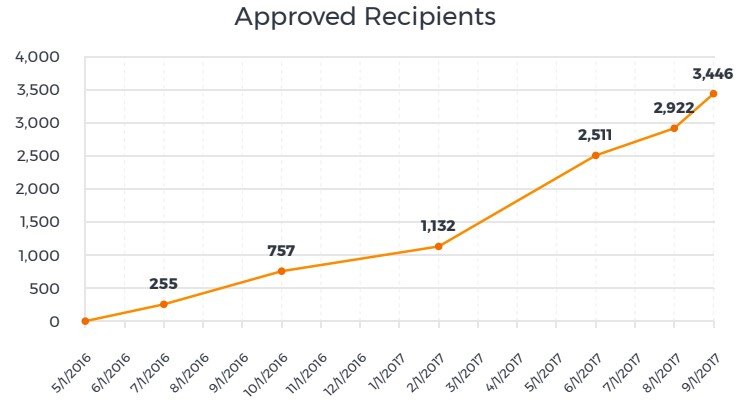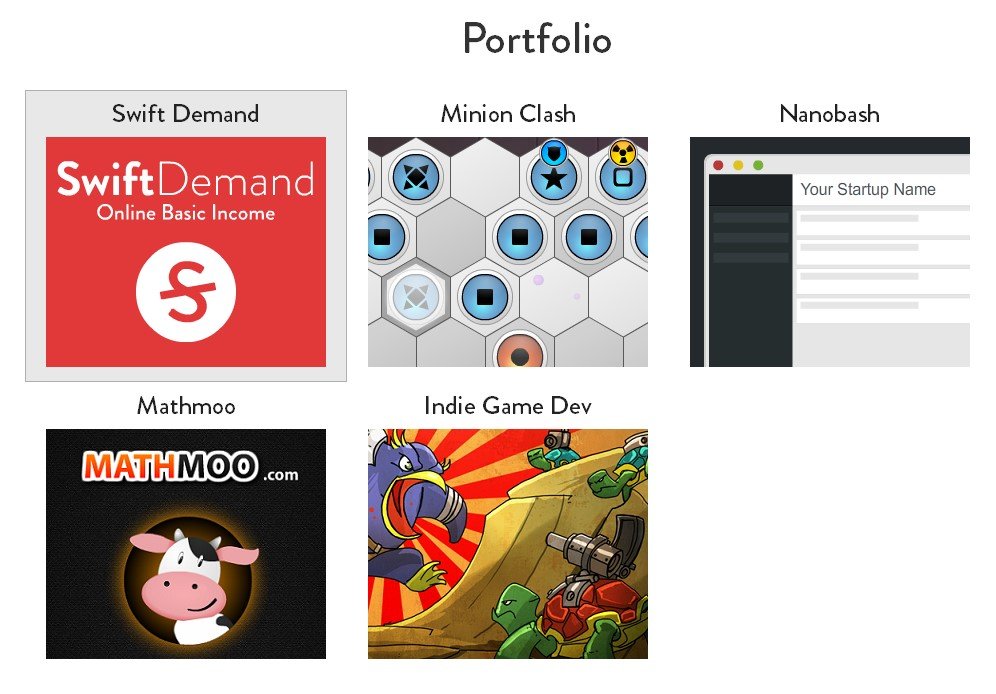Basic Income and Blockchain
There are different basic income projects on the blockchain: Mannabase, Circles, SwiftDemand, projectUBU, Enumivo, Frink, Solidar, Big Foundation, Democracy Earth, GoodDollar.
The reasons for this diversity should be discussed separately, a little later. First, let’s consider the main characteristics of these enterprises. BNT will take two, probably, the most well-known projects: Mannabase and SwiftDemand.
Mannabase
The project was created in 2015. Mannabase founders include Eric STETSON, Jon FRENCHIN, and Brandon VENETTA. The technological basis of the project is supported by Mannabase Inc. The People's Currency Foundation manages the project and is registered with the US Internal Revenue Service as a nonprofit organization pursuant to paragraph 501 (c) (3) of its laws.
However, when you try to get to know this fund better, you can find out that the organization’s website is not working: it is undergoing a long reconstruction.
The mission of Mannabase is as following:

Mannabase Technology
The project has undergone several changes. Initially, tokens were issued as Grantcoins (GRT), but later, in 2017, they were renamed for Manna. It is stated that the rebranding did not affect the owners of GRT — their coins and wallets received compatibility with the new cryptocurrency.
At the start of the project, the program code of a well-known Bitcoin fork called Peercoin was used, with the Proof-of-Work mining and consensus. The Proof-of-Stake consensus is not currently used, but its implementation is not excluded in the future.
In 2018, the developers decided to implement the compatibility of the blockchain project with some features of the Ethereum platform, in particular with smart contracts.
Mannabase Economy

According to Coinmarketcap, a total of 2,360,543,766 Manna coins were issued, and the price of one currently is $0,000,420. The only exchange on which trading takes place is SouthXchange, and the volume is quite low.
At the beginning of 2018, the number of Manna holders was about 3,500, and during the year it reportedly doubled. If the user completes the registration process, he or she receives a certain amount of digital coins, and every week all wallet holders receive a new portion of Manna. There is a referral program in which a community member who facilitated the registration of new users receives a reward.

Mannabase Fraud Prevention
New users are identified by their mobile phone number. To suppress the possibility of registering multiple accounts of one person, algorithmic methods are used that identify these actions.
In the future, more in-depth testing of community members is planned with a scoring system that will analyze the features of user behavior when interacting with the system. If the system identifies someone as suspicious, biometric identification methods will be involved.
Current state of Mannabase
According to the roadmap of the project, a launch was supposed to take place this year: first testnet, and then mainnet of the expanded proprietary Mannabase blockchain. However, there are no mentions of this on the site or the social networks of the project.

On the other hand, Mannabase’s Twitter account shows some signs of life — the last entry was left on October 15 this year.
Swiftdemand
The project was created in 2017 by Christopher GREGORIO, a former developer of gaming applications.

SwiftDemand Objectives
Swift (digital coin of the project) was created to embody basic income. The developer sees the future of the project as the dominant cryptocurrency for transactions, offering a significant basic income for all users. It is planned to create a platform to support cryptocurrency.
SwiftDemand Technology
At the moment, according to the FAQ section of the website, Swift is a digital currency but not cryptocurrency. Upon completion of the development of the technological part, the coin will be placed on exchanges and become a full-fledged cryptocurrency.

The SwiftDemand protocol implements the Autonomous Digital Organization (DAO), which regulates the issuance, distribution and circulation of digital coins. Each new user receives 1000 Swift on the balance of his or her account, and every day this amount increases by 100 units.
A referral program has been implemented that allows project participants to receive rewards for registering new users.
Economy of SwiftDemand
At the moment, according to the statistics of the project, it has created almost 500 thousand accounts. The number of circulating coins is 3 125 637 746. On November 9, 32 transactions with a volume of 111 433 Swift coins were carried out per day.
On the main page of the project there is no mention of a store where it is possible to purchase and sell goods for Swift, but, according to some participants, such resources exist.
SwiftDemand Fraud Prevention
The protocol of the project provides identifier nodes that control the actions of users of the system. Each new SwiftDemand member (“citizen” in the terminology of the project) goes through a week-long incubation period after registration.

Current state of SwiftDemand
The roadmap of the project does not have a mark on the year of its implementation, so it’s difficult to say what stage the work is currently at. According to the same FAQ section, the plans of the developers included the transformation of project coins into cryptocurrencies in mid-2018. However, there is no mention of the implementation of this stage.

Blockchain Basic Income: Essence
The best idea, probably, is to quote creators and developers. Words from the white paper of the Mannabase project:
«...giving the currency away according to the principle of Universal Basic Income was the most effective way to acquire a large base of holders, and ultimately users, of the currency...»
And here are the words from the SwiftDemand description on Crunchbase:
“SwiftDemand is a new digital currency that is distributed as Universal Basic Income”
The main pages of blockchain-based income-generating projects websites usually are full of pathos, righteous anger and pathetic multi-page colorful descriptions of the injustice of this world, the unequal distribution of benefits, the need for change, and other rather empty words.
However, we can confidently assume that in reality, the basic income on the blockchain is a beautiful marketing strategy wrapped in a socially approved shell, by which crypto projects collect their user base: whether it is successful or not — that’s another question.